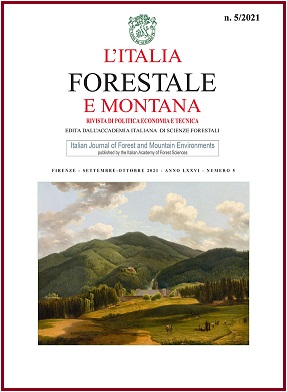Published
2021-11-26
Keywords
- Vallombrosa,
- landscape,
- forest management,
- fir woods,
- forest management history
Abstract
The study of microtoponomastics, the examination of sources and the use of new technologies for the creation of geographic information systems capable of gathering various layers of information, allows the extraction of extremely interesting materials for land planning. The case study of the Vallombrosa Forest, probably the best-known forest area in Italy, is indicative of how the exploration of the world of historical archives is important still today. From the evidence that the Vallombrosan Benedictine monks, in the last years of the eighteenth century, had already drawn up a forest regulation plan, we can see the need and urgency to preserve a real scientific and cultural heritage. The creation of a Silvomuseum in Vallombrosa is confirmed as a brilliant intuition and its careful and punctual realization represents the challenge that awaits the current managers of the millenary forest, the cradle of Italian forestry sciences.


